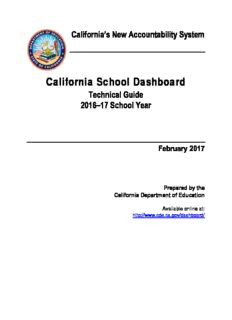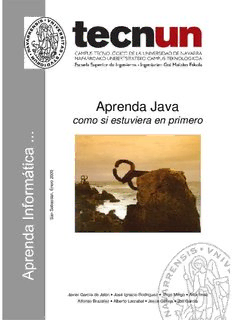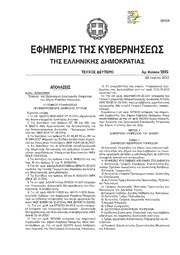
Data Structures and Algorithms in Java, 4th Edition PDF
Preview Data Structures and Algorithms in Java, 4th Edition
Data Structures and Algorithms in Java Michael T. Goodrich Department of Computer Science University of California, Irvine 1 Roberto Tamassia Department of Computer Science Brown University 0-471-73884-0 Fourth Edition John Wiley & Sons, Inc. ASSOCIATE PUBLISHER Dan Sayre MARKETING DIRECTOR Frank Lyman EDITORIAL ASSISTANT Bridget Morrisey SENIOR PRODUCTION EDITOR Ken Santor COVER DESIGNER Hope Miller COVER PHOTO RESEARCHER Lisa Gee COVER PHOTO Ralph A. Clevenger/Corbis This book was set in by the authors and printed and bound by R.R. Donnelley - Crawfordsville. The cover was printed by Phoenix Color, Inc. Front Matter 2 To Karen, Paul, Anna, and Jack -Michael T. Goodrich To Isabel -Roberto Tamassia Preface to the Fourth Edition This fourth edition is designed to provide an introduction to data structures and algorithms, including their design, analysis, and implementation. In terms of curricula based on the IEEE/ACM 2001 Computing Curriculum, this book is appropriate for use in the courses CS102 (I/O/B versions), CS103 (I/O/B versions), CS111 (A version), and CS112 (A/I/O/F/H versions). We discuss its use for such courses in more detail later in this preface. The major changes, with respect to the third edition, are the following: • Added new chapter on arrays, linked lists, and recursion. • Added new chapter on memory management. • Full integration with Java 5.0. • Better integration with the Java Collections Framework. • Better coverage of iterators. • Increased coverage of array lists, including the replacement of uses of the class java.util.Vector with java.util.ArrayList. • Update of all Java APIs to use generic types. • Simplified list, binary tree, and priority queue ADTs. • Further streamlining of mathematics to the seven most used functions. • Expanded and revised exercises, bringing the total number of reinforcement, creativity, and project exercises to 670. Added exercises include new projects on maintaining a game's high-score list, evaluating postfix and infix expressions, minimax game-tree evaluation, processing stock buy and sell orders, scheduling CPU 3 jobs, n-body simulation, computing DNA-strand edit distance, and creating and solving mazes. This book is related to the following books: • M.T. Goodrich, R. Tamassia, and D.M. Mount, Data Structures and Algorithms in C++, John Wiley & Sons, Inc., 2004. This book has a similar overall structure to the present book, but uses C++ as the underlying language (with some modest, but necessary pedagogical differences required by this approach). Thus, it could make for a handy companion book in a curriculum that allows for either a Java or C++ track in the introductory courses. • M.T. Goodrich and R. Tamassia, Algorithm Design: Foundations, Analysis, and Internet Examples, John Wiley & Sons, Inc., 2002. This is a textbook for a more advanced algorithms and data structures course, such as CS210 (T/W/C/S versions) in the IEEE/ACM 2001 curriculum. Use as a Textbook The design and analysis of efficient data structures has long been recognized as a vital subject in computing, for the study of data structures is part of the core of every collegiate computer science and computer engineering major program we are familiar with. Typically, the introductory courses are presented as a two- or three-course sequence. Elementary data structures are often briefly introduced in the first programming or introduction to computer science course and this is followed by a more in-depth introduction to data structures in the following course(s). Furthermore, this course sequence is typically followed at a later point in the curriculum by a more in-depth study of data structures and algorithms. We feel that the central role of data structure design and analysis in the curriculum is fully justified, given the importance of efficient data structures in most software systems, including the Web, operating systems, databases, compilers, and scientific simulation systems. With the emergence of the object-oriented paradigm as the framework of choice for building robust and reusable software, we have tried to take a consistent objectoriented viewpoint throughout this text. One of the main ideas of the object-oriented approach is that data should be presented as being encapsulated with the methods that access and modify them. That is, rather than simply viewing data as a collection of bytes and addresses, we think of data as instances of an abstract data type (ADT) 4 that include a repertory of methods for performing operations on the data. Likewise, object-oriented solutions are often organized utilizing common design patterns, which facilitate software reuse and robustness. Thus, we present each data structure using ADTs and their respective implementations and we introduce important design patterns as means to organize those implementations into classes, methods, and objects. For each ADT presented in this book, we provide an associated Java interface. Also, concrete data structures realizing the ADTs are provided as Java classes implementing the interfaces above. We also give Java implementations of fundamental algorithms (such as sorting and graph traversals) and of sample applications of data structures (such as HTML tag matching and a photo album). Due to space limitations, we sometimes show only code fragments in the book and make additional source code available on the companion Web site, http://java.datastructures.net. The Java code implementing fundamental data structures in this book is organized in a single Java package, net.datastructures. This package forms a coherent library of data structures and algorithms in Java specifically designed for educational purposes in a way that is complementary with the Java Collections Framework. Web Added-Value Education This book is accompanied by an extensive Web site: http://java.datastructures.net. Students are encouraged to use this site along with the book, to help with exercises and increase understanding of the subject. Instructors are likewise welcome to use the site to help plan, organize, and present their course materials. For the Student for all readers, and specifically for students, we include: • All the Java source code presented in this book. • The student version of the net.datastructures package. • Slide handouts (four-per-page) in PDF format. 5 • A database of hints to all exercises, indexed by problem number. • Java animations and interactive applets for data structures and algorithms. • Hyperlinks to other data structures and algorithms resources. We feel that the Java animations and interactive applets should be of particular interest, since they allow readers to interactively "play" with different data structures, which leads to better understanding of the different ADTs. In addition, the hints should be of considerable use to anyone needing a little help getting started on certain exercises. For the Instructor For instructors using this book, we include the following additional teaching aids: • Solutions to over two hundred of the book's exercises. • A keyword-searchable database of additional exercises. • The complete net.datastructures package. • Additional Java source code. • Slides in Powerpoint and PDF (one-per-page) format. • Self-contained special-topic supplements, including discussions on convex hulls, range trees, and orthogonal segment intersection. The slides are fully editable, so as to allow an instructor using this book full freedom in customizing his or her presentations. A Resource for Teaching Data Structures and Algorithms This book contains many Java-code and pseudo-code fragments, and over 670 exercises, which are divided into roughly 40% reinforcement exercises, 40% creativity exercises, and 20% programming projects. 6 This book can be used for courses CS102 (I/O/B versions), CS103 (I/O/B versions), CS111 (A version), and/or CS112 (A/I/O/F/H versions) in the IEEE/ACM 2001 Computing Curriculum, with instructional units as outlined in Table 0.1. Table 0.1: Material for Units in the IEEE/ACM 2001 Computing Curriculum. Instructional Unit Relevant Material PL1. Overview of Programming Languages Chapters 1 & 2 PL2. Virtual Machines Sections 14.1.1, 14.1.2, & 14.1.3 PL3. Introduction to Language Translation Section 1.9 PL4. Declarations and Types Sections 1.1, 2.4, & 2.5 PL5. Abstraction Mechanisms Sections 2.4, 5.1, 5.2, 5.3, 6.1.1, 6.2, 6.4, 6.3, 7.1, 7.3.1, 8.1, 9.1, 9.3, 11.6, & 13.1 PL6. Object-Oriented Programming Chapters 1 & 2 and Sections 6.2.2, 6.3, 7.3.7, 8.1.2, & 13.3.1 PF1. Fundamental Programming Constructs Chapters 1 & 2 PF2. Algorithms and Problem-Solving Sections 1.9 & 4.2 PF3. Fundamental Data Structures 7 Sections 3.1, 5.1-3.2, 5.3, , 6.1-6.4, 7.1, 7.3, 8.1, 8.3, 9.1- 9.4, 10.1, & 13.1 PF4. Recursion Section 3.5 SE1. Software Design Chapter 2 and Sections 6.2.2, 6.3, 7.3.7, 8.1.2, & 13.3.1 SE2. Using APIs Sections 2.4, 5.1, 5.2, 5.3, 6.1.1, 6.2, 6.4, 6.3, 7.1, 7.3.1, 8.1, 9.1, 9.3, 11.6, & 13.1 AL1. Basic Algorithmic Analysis Chapter 4 AL2. Algorithmic Strategies Sections 11.1.1, 11.7.1, 12.2.1, 12.4.2, & 12.5.2 AL3. Fundamental Computing Algorithms Sections 8.1.4, 8.2.3, 8.3.5, 9.2, & 9.3.3, and Chapters 11, 12, & 13 DS1. Functions, Relations, and Sets Sections 4.1, 8.1, & 11.6 DS3. Proof Techniques Sections 4.3, 6.1.4, 7.3.3, 8.3, 10.2, 10.3, 10.4, 10.5, 11.2.1, 11.3, 11.6.2, 13.1, 13.3.1, 13.4, & 13.5 DS4. Basics of Counting Sections 2.2.3 & 11.1.5 DS5. Graphs and Trees Chapters 7, 8, 10, & 13 DS6. Discrete Probability Appendix A and Sections 9.2.2, 9.4.2, 11.2.1, & 11.7 8 Chapter Listing The chapters for this course are organized to provide a pedagogical path that starts with the basics of Java programming and object- oriented design, moves to concrete structures like arrays and linked lists, adds foundational techniques like recursion and algorithm analysis, and then presents the fundamental data structures and algorithms, concluding with a discussion of memory management (that is, the architectural underpinnings of data structures). Specifically, the chapters for this book are organized as follows: 1. Java Programming Basics 2. Object-Oriented Design 3. Arrays, Linked Lists, and Recursion 4. Analysis Tools 5. Stacks and Queues 6. Lists and Iterators 7. Trees 8. Priority Queues 9. Maps and Dictionaries 10. Search Trees 11. Sorting, Sets, and Selection 12. Text Processing 13. Graphs 14. Memory A. Useful Mathematical Facts Prerequisites 9 We have written this book assuming that the reader comes to it with certain knowledge.That is, we assume that the reader is at least vaguely familiar with a high-level programming language, such as C, C++, or Java, and that he or she understands the main constructs from such a high-level language, including: • Variables and expressions. • Methods (also known as functions or procedures). • Decision structures (such as if-statements and switch- statements). • Iteration structures (for-loops and while-loops). For readers who are familiar with these concepts, but not with how they are expressed in Java, we provide a primer on the Java language in Chapter 1. Still, this book is primarily a data structures book, not a Java book; hence, it does not provide a comprehensive treatment of Java. Nevertheless, we do not assume that the reader is necessarily familiar with object-oriented design or with linked structures, such as linked lists, for these topics are covered in the core chapters of this book. In terms of mathematical background, we assume the reader is somewhat familiar with topics from high-school mathematics. Even so, in Chapter 4, we discuss the seven most-important functions for algorithm analysis. In fact, sections that use something other than one of these seven functions are considered optional, and are indicated with a star (★). We give a summary of other useful mathematical facts, including elementary probability, in Appendix A. About the Authors Professors Goodrich and Tamassia are well-recognized researchers in algorithms and data structures, having published many papers in this field, with applications to Internet computing, information visualization, computer security, and geometric computing. They have served as principal investigators in several joint projects sponsored by the National Science Foundation, the Army Research Office, and the Defense Advanced Research Projects Agency. They are also active in educational technology research, with special emphasis on algorithm visualization systems. 10
Description:The list of books you might like

Corrupt (Devil's Night #1)

The 5 Second Rule: Transform your Life, Work, and Confidence with Everyday Courage

Mind Management, Not Time Management

A Thousand Boy Kisses

Nutrient Composition of Rations for Short-Term, High-Intensity Combat Operations

To Sail Beyond the Sunset

Sustainable Management of Mining Operations

Greek Government Gazette: Part 1, 2006 no. 38

New Zealand Listener - June 25, 2022

Distributed quantum computation via optical fibres

Greek Government Gazette: Part 7, 2006 no. 895

Right off the Bat by William F Kirk

CA New Accountability System - California Accountability & School Dashboard

The Journal of Conflict Resolution 1993: Vol 37 Index

Long Way Down

Aprenda Java - Tecnun :: Universidad de Navarra: tecnun

Union Government, Extraordinary, 2010-01-15, Part II-Section 3-Sub-Section(ii), Ref. S.O. 87(E)

Caldaia murale a gas ad alto rendimento

Border Carbon Ajustment in Europe and Trade Retaliation

A New Species of Goniozus from Thailand (Hymenoptera: Bethylidae)




